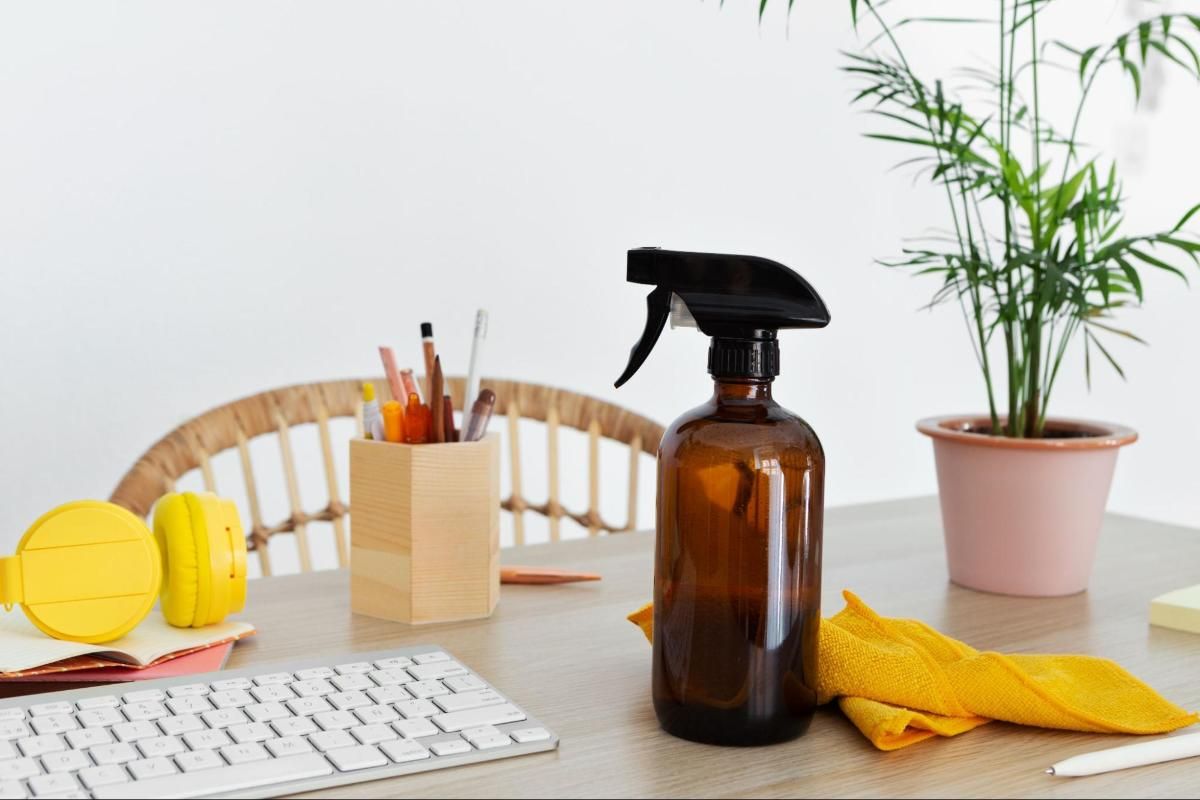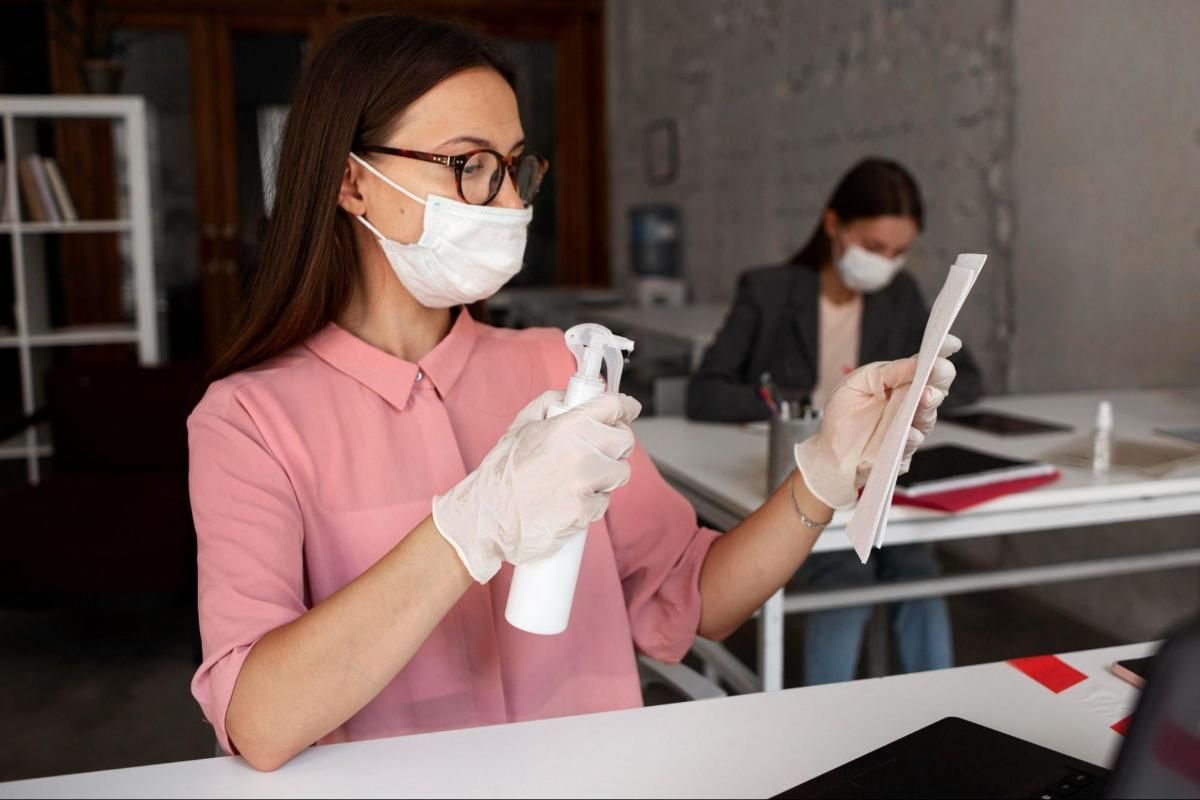Green Cleaning and Indoor Air Quality: Office Solutions
As environmental expectations rise and Australian sustainability regulations tighten, businesses are being held to higher operational standards—especially when it comes to commercial cleaning. The relationship between green cleaning and indoor air quality is no longer optional; it's a strategic necessity for businesses aiming to enhance workplace wellness, reduce environmental impact, and align with evolving compliance mandates.
This guide explores how eco-friendly cleaning methods contribute to better air quality, employee comfort, and regulatory alignment—while also supporting operational efficiency in Sydney workplaces.
Why Indoor Air Quality Matters in Modern Workplaces
Workplaces today are complex environments where indoor pollutants can accumulate due to poor ventilation, chemical use, and dust-generating activities. Without proper intervention, these contaminants can affect staff comfort, energy levels, and even performance.
Green cleaning practices minimise chemical emissions and particle pollutants, ensuring cleaner air within enclosed office environments. Unlike traditional cleaning products, which often release volatile compounds into the atmosphere, eco-certified alternatives support breathable, fresher air.
For businesses prioritising sustainable operations, aligning with a reliable provider like Everyday Clean ensures your cleaning strategy meets modern expectations.
Key Benefits of Green Cleaning for Air Quality
Choosing green cleaning solutions has a measurable impact on workplace air and cleanliness. These benefits extend far beyond visual appearance and directly contribute to a more balanced work environment.
Minimising Toxic Residues from Cleaning Products
Traditional cleaners often contain ammonia, bleach, and synthetic fragrances, which contribute to airborne toxins. Green cleaning replaces these with naturally derived ingredients—like citric acid or vinegar-based surfactants—that clean surfaces effectively without lingering fumes.
Workplaces adopting low-VOC products significantly reduce indoor pollution levels, supporting cleaner airflow throughout their spaces.
HEPA Vacuums and Dust-Control Systems
Dust is a major contributor to indoor air contamination. Fine particles from carpets, upholstery, and electronics circulate through HVAC systems unless properly managed. The use of HEPA-filtered vacuums and microfibre cloths traps these particles without kicking them into the air.
This dual action—capturing and containing—ensures dust is removed at the source, reducing long-term build-up in frequently occupied rooms.
==For Sydney offices with shared meeting spaces, long workdays, and heavy foot traffic, partnering with a specialised
office cleaning team ensures professional-grade tools are used for maximum effectiveness.

Eco-Certified Products: What to Look For
Transitioning to a green cleaning program starts with product selection. Not all “natural” or “green” labels are created equal, so businesses should focus on third-party certification marks that reflect true sustainability standards.
Trusted Environmental Certifications in Australia
Look for products bearing logos from:
- GECA (Good Environmental Choice Australia) – Verifies low toxicity and ethical sourcing.
- Green Seal or EcoLogo – Internationally recognised safety and biodegradability standards.
- LEED-friendly materials – Align with green building compliance benchmarks.
Beyond labels, transparency in ingredient sourcing and manufacturing ethics also indicates product integrity.
Avoiding Common Pitfalls in Green Claims
Watch for greenwashing—where brands label products as “eco-friendly” without backing it up. True green cleaning products should be:
- Biodegradable within 28 days
- Free from phosphates and artificial dyes
- Clearly labelled with ingredients and instructions
By understanding product data sheets (PDS), facility managers can validate performance claims while ensuring staff safety and compliance.
Best Practices for Green Cleaning Implementation
Installing a green cleaning framework isn’t just about swapping products—it’s about integrating eco-conscious strategies throughout daily cleaning operations.
Staff Training and Product Handling
Train your cleaning crew to use concentrated solutions correctly to minimise waste and avoid chemical overuse. Ensure clear protocols for diluting, labelling, and applying products in accordance with manufacturer instructions.
High-Use Zones and Frequency Plans
Focus on areas with the greatest exposure: lobbies, kitchens, break rooms, and restrooms. Implement clear schedules for:
- Disinfecting shared touchpoints
- Vacuuming with HEPA systems
- Replacing indoor air filters routinely
Routine checks ensure long-term adherence and cleaner indoor air throughout.

Why Businesses Are Prioritising Air Quality and Sustainability
Workplace design increasingly includes wellness and sustainability as core pillars. With remote work reducing in some sectors, offices must create environments that promote focus and reduce physical discomfort. Clean air contributes directly to both.
Moreover, businesses that demonstrate environmental stewardship often attract clients, partners, and talent who align with those values—building reputation alongside regulatory compliance.
Even from an operational standpoint, reducing chemical reliance:
- Extends equipment and surface lifespan
- Reduces storage hazards
- Minimises waste disposal costs
- The commercial advantages of green cleaning now go hand-in-hand with environmental and team well-being.

Final Thoughts: Building a Sustainable Cleaning Strategy
The push for sustainable operations isn’t just coming from government mandates—it’s coming from employees, customers, and the global market. Green cleaning and indoor air quality efforts are one of the most visible, impactful ways companies can demonstrate their values.
By integrating non-toxic products, HEPA technology, and certified practices, workplaces in Sydney can operate more responsibly and confidently—without compromising on cleanliness or compliance.
Ready to transform your workplace?
Contact Everyday Clean for eco-conscious commercial cleaning services tailored to your needs. Enjoy cleaner air, safer surfaces, and a greener footprint.
FAQs About Green Cleaning and Indoor Air Quality
What is the difference between green cleaning and traditional cleaning?
Green cleaning uses eco-certified, low-toxicity products that reduce airborne pollutants and environmental impact, unlike traditional methods that often rely on harsh chemicals.
Do green cleaning products actually work?
Yes. Certified green cleaning solutions are designed to meet performance standards without compromising safety or sustainability.
Can green cleaning improve employee productivity?
Cleaner air, reduced odours, and fewer chemical residues contribute to a more comfortable and focused work environment—often improving overall productivity and satisfaction.
How can I verify if a cleaning service is truly eco-friendly?
Check if they use certified products (e.g., GECA), provide full product transparency, and follow sustainable disposal and usage practices.
Author’s Box
Author: Everyday Clean Content Team
Everyday Clean is Sydney’s trusted provider of professional office, strata, and commercial cleaning services. Our licensed and insured team helps workplaces maintain top hygiene standards with eco-friendly products and proven cleaning systems. With years of experience supporting Sydney businesses, Everyday Clean shares expert tips, real case studies, and practical advice to keep your workplace safe, compliant, and welcoming.


